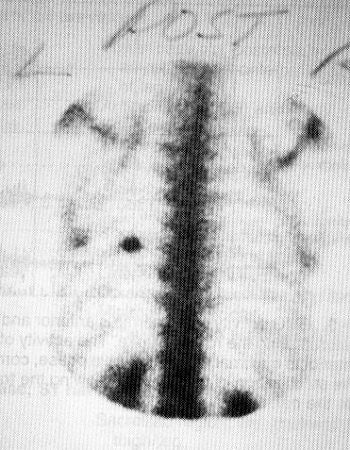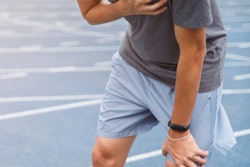
Rowing has been a competitive sport since it debuted in England in 1716. It became an international collegiate sport in 1793 and was supposed to be part of the first modern Olympics in 1896, but the competition was washed out by bad weather. Men made their Olympic rowing debut in 1900, and women finally began racing in 1976.
Despite all that history, there’s not a great deal of medical literature about rowing injuries. But in recent years, at least anecdotally, rowers are getting hurt in greater numbers, suffering particularly from stress fractures of the ribs.
The higher rate of stress fractures is due to technological improvements in rowing equipment, according to Dr. Timothy Hosea, chairman of the sports medicine committee for USA Rowing and a team physician at Rutgers University in New Jersey. In addition, he is an associate professor of orthopedic surgery at Robert Wood Johnson Medical School, also located in New Jersey.
"It was always common, but much more so since 1992, when they changed the configuration of the oars," Hosea said. The old tulip-style was replaced by the hatchet blade, and wood gave way to carbon, which tends to be stiffer.
"The new fibers allow for quicker application of a load, and the boats go faster. But there’s greater stress on the muscles in the shoulder girdle," Hosea said.
Stress fractures manifest themselves as diffuse, aching pains in the core and shoulder girdle before graduating to a sharp, pinpoint pain that causes agony with movements as simple as rolling over in bed. The symptoms are similar to those of a pulled intercostal muscle, which for a long time stood as the conventional diagnosis of the injured rower, Hosea said.
Hosea views are backed up by the literature. A 1985 study stated that "fractures of the ribs related to rowing sports have not been reported," while a 1997 report claimed that "stress fractures are rare" in rowing (American Journal of Sports Medicine, September-October 1985, Vol. 13:5, pp. 342-8; Scandinavian Journal of Medicine and Science, February 1997, Vol. 7:1, pp. 49-52).
These days it's rare to find athletes who don't have problems with their ribs at some point in their careers. "I think it’s as high as 60 or 70 percent of all rowers," said Hosea, who has worked with USA Rowing since 1993.
According to Hosea, fractures usually occur between the fifth and ninth ribs, and are typically -- though not always -- located in the posterior lateral corner. Stress fractures don’t appear on x-rays, so nuclear scintigraphy may be the imaging method of choice for identifying these injuries.
 |
| Bone scan shows stress fracture in the rib of a member of the U.S. national and U.S Olympic rowing teams. Image courtesy Dr. Timothy Hosea. |
"There’s a discrete area of increased uptake, a very defined fracture. An intercostal pull has a normal bone scan," Hosea noted.
Treatment consists of a low-impact cross-training regimen. The pain precludes running, so rehabilitation consists of stationary bikes and elliptical machines. "You never use the word ‘rest’ when it comes to an Olympic athlete," Hosea said.
Recovery depends on the athlete's heeding the warning signs of a fracture. By reporting symptoms early, a rower can return to full activity in a week or two. If not, recovery may take as long as six weeks.
"A quick recovery usually only happens the second time around," Hosea said, "once the athlete recognizes what’s going on. The first time, it’s four to six weeks."
According to Hosea, using a rowing machine is integral to recovery and prevention. And it may be counterintuitive, but rowing at slower rates increases the risk of injury.
The standard stroke rate for a rehabilitating athlete used to be about 18 strokes per minute. But at that rate, the "boat" will decelerate, forcing the athlete to take on a heavier load to maintain a consistent training speed.
"We’re getting smarter in training," Hosea said. "If the athletes row at about 26 strokes per minute, the boat doesn’t have time to decelerate. We use lighter resistance and shorter oars."
"A stress fracture is an overuse injury, and we’ve been able to convince coaches to change the ways they use the machines," Hosea added. "We’re doing much better in terms of rib injuries. I’ve only seen three or four this year."
By Matt King
AuntMinnie.com contributing writer
August 23, 2004
Related Reading
Figure skating and stress fractures: A case study February 14, 2002
Copyright © 2004 AuntMinnie.com




















